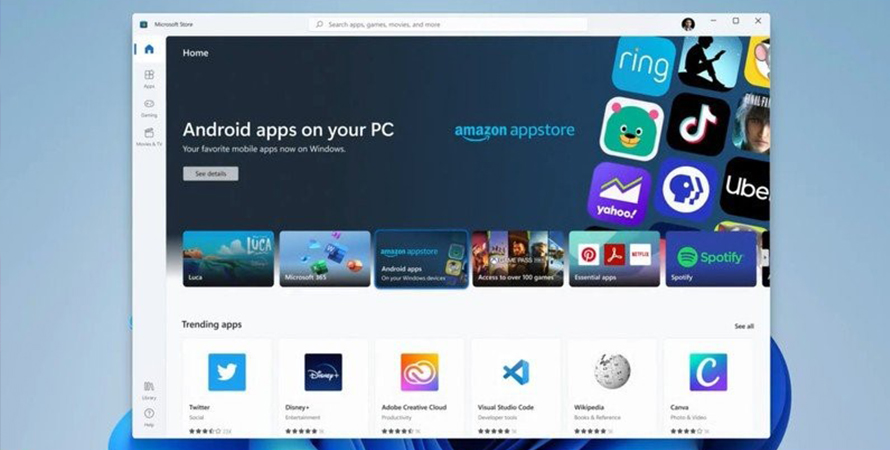
In 2020, e-commerce retailers saw a substantial rise in demand. The COVID-19 pandemic moved millions of people to the virtual space, powering up online shopping. Even though the purchasing power decreased, shoppers still turned to online stores to fulfil their needs.
According to a McKinsey survey, more than 60% of U.K. consumers changed their shopping habits. About 90% of them don't plan to change them back. In 2021, 37% of consumers are planning to shop more online, so e-commerce will continue experiencing a substantial boost.
This year, online retailers have to adjust to the growing needs of their target audience. Let's take a closer look at why the e-commerce boom isn't about to stop any time soon.
Revealing 2020 E-Commerce Stats
- E-commerce experienced 10 years' worth of growth in just 3 months of 2020 (Periscope by McKinsey).
- In June 2020, e-commerce sales were up 104% over June 2019 (Signifyd).
- In 2020, e-commerce sales accounted for 31.3% of retail sales in the UK, compared to 21% in 2019 (Office of National Statistics).
- COVID-19 added over £5 billion to the UK e-commerce sales in 2020 (Ascential).
- In 2020, the number of e-commerce users in the world increased by 9.5% (Finaria).
The pandemic drove substantial traffic to online stores, increasing e-commerce market share. However, with vaccination efforts in full swing, won the numbers start dropping soon? Here is why this isn't going to happen.

Why E-Commerce Will Continue Growing in 2021
The year 2020 was marked by the COVID-19 pandemic. In 2021, people all over the world are hoping for it to end within months. Why will e-commerce continue growing?
The Pandemic is Still Here
No matter how optimistic global forecasts are about the end of the pandemic, it's still here. Millions of people all over the world are stuck at home. Even though there is light at the end of the tunnel, the UK lockdown is still going strong.
While Generation Z'rs and Millennials could start moving around freely within months, people from high-risk age groups are likely to stay at home for a while. Accordingly, the need for online shopping isn't likely to decrease.
Online Shopping Became Highly Convenient
According to the Wunderman Thompson Commerce study, 65% of consumers plan to use digital shopping channels even more in the future. The reason is speed and convenience.
Retailers in the UK and beyond adjusted their marketing and sales efforts to suit the growing online audience. It became much easier and quicker to shop online than it was back in 2019.
In the 21st century, consumers are highly stressed and pressed for time. Even without lockdowns, they often don't have an opportunity to go to physical stores.
The new approach to online sales made it more convenient for shoppers to make purchases online, thus leaving brick-and-mortar shops behind.
Personalisation Converts Consumers on the Spot
AI-powered tools make data collection and analytics much easier online. E-commerce retailers are taking full advantage of the available technologies to cater to the personal needs of their clients.
With personalisation efforts on the rise, consumers receive perfectly tailored offers online. They are more likely to buy "on the spot" instead of spending precious time browsing products offline.
Sophisticated Marketing Tactics Keep Consumers at Home
Before making a purchase, 90% of consumers do research on the internet. The moment they show any interest in the product, the marketing machine starts producing perfectly crafted online offers.
It's much easier to make a couple of clicks and order a product than go to a brick-and-mortar store.
Consumers who learned to shop online during the pandemic learned the major benefits of such shopping offers. The majority of them isn't likely to go back to the old habits. Meanwhile, they are open to new options, pushing online shopping to continue growing.
Omnichannel User Experience Drives Online Sales
Before the pandemic, only a small percentage of offline store owners focused on creating e-stores. During lockdowns, doing so became a survival tactic. The majority of brick-and-mortar shops works hard to maintain an online presence and create an omnichannel user experience.
By giving consumers an option to shop virtually, companies increase the percentage of online sales. Some retailers closed down their brick-and-mortar locations altogether to save on rent, salaries, and other overhead costs.
2021 E-Commerce Trends
While online shopping continues to grow, business owners are looking into 2021 e-commerce trends to stay ahead of the competition:
- The competition will increase — in 2020, it became much easier to start an online e-store. "Newbies" are racing to gain visibility. Due to this, in 2021, retailers will meet fierce competition in the digital marketing arena and face high customer acquisition costs.
- Customers will be harder to satisfy — in the race to outdo the competition, e-commerce companies "spoiled" consumers. Customers now expect higher levels of personalisation, convenience, and service.
- Retention will gain more importance — as customer acquisition costs increase, e-commerce retailers will shift the majority of their focus to retention. Loyalty programs, reward systems, and incentives will gain more power.
- Voice commerce will conquer consumers — as smart speakers are becoming an integral part of numerous households, voice shopping is gaining momentum. By 2022, voice shopping in the UK is expected to be worth £3.5 billion.
- Social commerce will be on the rise — building a high-quality website is no longer the only tool for succeeding in e-commerce. Retailers are actively selling products through social media channels and messengers like WhatsApp. In 2021, this trend will become even more obvious.
- AI-powered tools will become mandatory — AI-powered tools like chatbots and marketing platforms are becoming more and more sophisticated. In 2021, it will be tough to stay ahead of the competition without them.
The Takeaway
In 2017, market experts predicted that by 2040, 95% of purchases will be made online. With COVID-19 speeding up the process, this could happen a decade earlier. The accelerated digital shift is already here. It's up to e-commerce retailers to adjust to it.
Pandemic or not, online shopping is going to continue growing to cater to the evolving needs of the 21st-century consumer.





